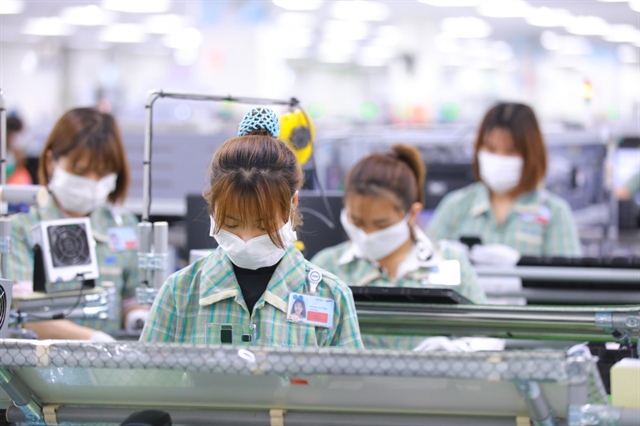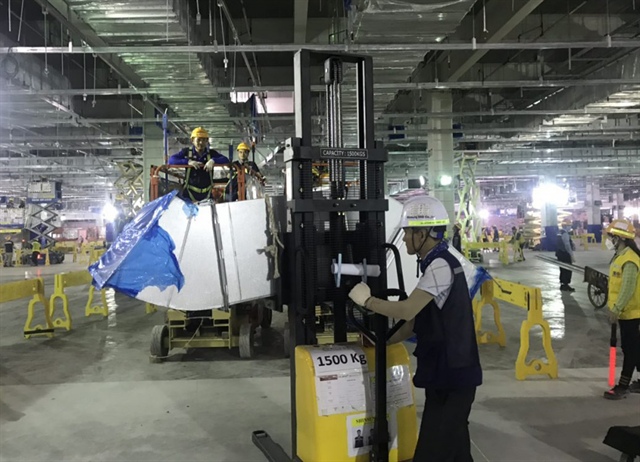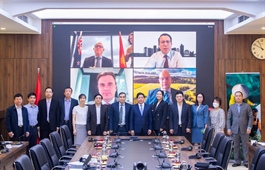Frustrated by low localization rate, Vietnam seeks solutions
Frustrated by low localization rate, Vietnam seeks solutions
Vietnam is home to many multinational corporations manufacturing a wide range of products, whether in the aerospace technology and shipping industries or automobiles and electronics. However, domestic industries provide a relatively low percent of the multinationals’ needs for components, parts and raw material, and persistent government efforts to increase the localization rate have yielded limited success.
|
According to the Foreign Investment Agency, as of February 2022, Vietnam had attracted more than 34,000 valid foreign direct investment (FDI) projects, with total registered capital of over US$418 billion.
A large number of FDI projects in Vietnam are implemented by large corporations such as the Korean Samsung Group and LG and Japan’s Canon. These corporations have recently increased investment capital in Vietnam. For example, LG Display Vietnam, Hai Phong (LGD) increased its investment capital twice in 2021, raising the total of LGD project to US$4.65 billion. Most recently, in February 2022, Samsung Group added US$920 million for its Samsung Electro-Mechanics Vietnam project in Thai Nguyen that specializes in manufacturing and assembling circuit boards, components and spare parts including cameras, modules, adapters for telecommunications equipment, high-tech mobile equipment, and other electrical and electronic products.
The government, ministries, sectors and localities have continuously adopted incentive policies for supporting industry development, the most recent being Decree 111/2015/ND-CP on the development of supporting industry; Decision 68/QD-TTg approving the supporting industry development program from 2016 to 2025; and Decree 57/2021/ND-CP on corporate income tax incentives for supporting industry projects.
|
In addition, the Ministry of Industry and Trade (MoIT) as the management agency of the sector, has taken measures to promote the development of the domestic supporting industry. In 2020, the ministry coordinated with the People's Committee of Bac Ninh Province and Samsung Vietnam on a Memorandum of Understanding designed to help Vietnamese businesses join the global supply chain. Most recently, on February 17, 2022, the MoIT had a meeting with Hanoi’s Department of Industry and Trade to discuss mechanisms and policies to develop the local support industries.
Despite these efforts and opportunities, the number of domestic enterprises joining in the supply chain of foreign corporations remains modest. Specifically, the localization rate for the automotive industry is 5-20 percent, 5-10 percent for the electronics industry and about 30 percent for the leather, footwear and textile industry.
Economist Le Dang Doanh, former director of the Central Institute for Economic Management said the majority of supporting industry enterprises in Vietnam only focuses on simple low-tech products with low value in the product value structure.
Do Thi Thuy Huong, Vice President of the Vietnam Association for Support Industries pointed out that the support policies are good, but prove inadequate when put into practice partly due to the incentive conditions. Not only is the incentive application process complicated, it only applies to newly established enterprises not existing ones. Moreover, the incentives on land tax exemption and reduction are not applicable to businesses with active projects.
In order to survive, many support industry firms diversify their manufacturing, but since they do not focus on just one field to supply upstream producers, they are not eligible for tax incentives.
|
Do Thi Thuy Huong, Vice President of the Vietnam Association for Support Industries, said the flow of upstream producers and FDI enterprises into Vietnam offers significant opportunities for Vietnamese enterprises to join the global supply chain. |






















